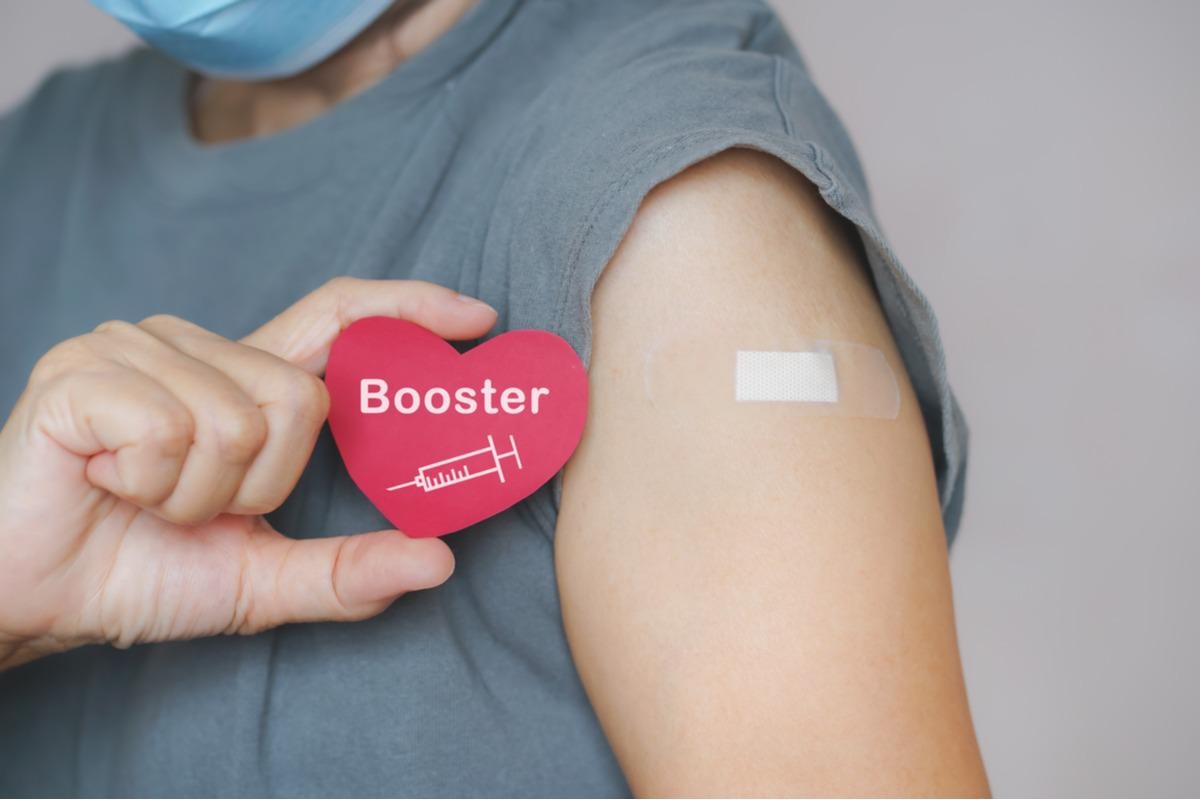In a recent study posted to the medRxiv* preprint server, researchers compared the efficacy of booster doses of heterologous intramuscular and aerosolized adenovirus-vectored vaccine (Ad5-nCoV), a recombinant protein-based ZF2001 vaccine, and homologous CoronaVac vaccines. The booster dose effectiveness was evaluated against the severe acute respiratory syndrome coronavirus 2 (SARS-CoV-2) wild-type (WT) and Omicron strains among individuals primed with inactivated coronavirus disease 2019 (COVID-19) vaccination six months before the study.
 Study: Aerosolized Ad5-nCoV booster vaccination elicited potent immune response against the SARS-CoV-2 Omicron variant after inactivated COVID-19 vaccine priming. Image Credit: Ratana21/Shutterstock
Study: Aerosolized Ad5-nCoV booster vaccination elicited potent immune response against the SARS-CoV-2 Omicron variant after inactivated COVID-19 vaccine priming. Image Credit: Ratana21/Shutterstock

 *Important notice: medRxiv publishes preliminary scientific reports that are not peer-reviewed and, therefore, should not be regarded as conclusive, guide clinical practice/health-related behavior, or treated as established information.
*Important notice: medRxiv publishes preliminary scientific reports that are not peer-reviewed and, therefore, should not be regarded as conclusive, guide clinical practice/health-related behavior, or treated as established information.
About the study
In the present study, the team compared the immunogenicity of booster vaccinations of Ad5-nCoV delivered intramuscularly (Ad5-nCoV-IM, 5×1010 viral particles), aerosolized Ad5-nCoV (Ad5-nCoV-IH, 1×1010 viral particles), ZF2001(25 μg), and CoronaVac (3 μg) in December 2021 among inactivated-COVID-19 vaccine primed individuals.
Over 900 participants were enrolled in the study. They were divided into four groups based on the type of booster dose administered-Ad5-nCoV-IM group (n=229), aerosolized Ad5-nCoV(n=223), ZF2001 group (n=219), and CoronaVac group (n=233). Individuals with COVID-19 history or immunocompromised disorders were excluded from the analysis.
Serum samples were obtained from the subjects and used for immunogenicity assessment at baseline, one week, two weeks, and four weeks post booster vaccination. Immunoglobulin G (IgG) titers against the receptor-binding domain (RBD) of the viral spike (S) protein were determined using the enzyme-linked immunosorbent assay (ELISA).
Additionally, pseudovirus neutralization antibody (PNAb) assays were conducted using the human immunodeficiency virus (HIV) pseudotyped virus. The anti-S IgG and interferon-gamma (IFNγ) ELISpot assays were performed to assess the B cell and T-cell responses, respectively, at baseline, two weeks, and four weeks of a booster vaccination. The spot assays were performed for 50 individuals per group.
Results
Within a week of booster vaccination, Ad5-nCoV-IM rapidly and significantly boosted the anti-RBD IgG titers 30-fold higher, followed by CoronaVac (nine-fold increase) and the ZF2001 booster (three-fold increase).
Two weeks post booster vaccination, Ad5-nCoV-IH generated the greatest IFNγ response, 13-fold of CoronaVac, 17-fold of ZF2001, and five times higher than that Ad5-nCoV-IM vaccines. Additionally, the IgG titers dramatically increased with an average fold increase of 464, 523,174, and 61 for Ad5-nCoV-IM, Ad5-nCoV-IH, ZF2001, and CoronaVac, respectively, from baseline.
The geometric mean titers (GMT) were 970, 567,308, and 139 for the Ad5-nCoV-IM, Ad5-nCoV-IH, ZF2001, and CoronaVac boosters, respectively. The booster-generated responses were higher for Ad5-nCoV-IH (GMT 320) and Ad5-nCoV-IM (GMT 261) compared to the other two groups. Likewise, the anti-S IgG spot responses were higher for the Ad5-nCoV vaccines.
Four weeks post booster dose, Ad5-nCoV-IH generated the highest anti-Omicron S antibody titers with efficacy 14-fold higher than CoronaVac, 5.6-fold of ZF2001, and double of Ad5-nCoV-IM vaccine. In all the groups, peak IgG titers were observed two weeks post vaccine booster and decreased slightly after four weeks of a booster dose. The median fold increases were 281, 361, 120, and 47 for Ad5-nCoV-IM, Ad5-nCoV-IH, ZF2001, and CoronaVac., respectively. The geometric mean concentration (GMC) of the antibody titers generated by Ad5-nCoV-IH b was greater than the others. Additionally, Ad5-nCoV-IH-induced PNAb titers remained steady with GMT 874, while the titers generated by other boosters decreased.
The two-week median IgG spots were 600,1250,100 and 80 for Ad5-nCoV-IM, Ad5-nCoV-IH, ZF2001, and CoronaVac, respectively, which decreased to 265, 360, 70, and 90, respectively, four weeks post booster dose. About 83% and 61% of participants in the Ad5-nCoV-IM group and 89% and 72% of the Ad5-nCoV-IH group demonstrated a four-fold increase in the anti-S IgG spots two weeks and four weeks post booster dose, respectively. These values were substantially higher than that of CoronaVac and ZF2001 boosters. The anti-RBD IgG titers positively correlated with the anti-S IgG spots in the subjects, two weeks and four weeks post booster vaccination, except for the CoronaVac booster group.
Although Ad5-nCoV-IH was unable to alter anti-RBD IgG titers, it induced the most potent IFNγ response, 100% and 95.7%, with the aerosolized Ad5-nCoV booster and 85% and 69% with the Ad5-nCoV-IM booster two weeks and four weeks post booster dose, respectively. The IFNγ levels positively correlated with the presence of anti-S IgG spots. Although PNAb titers against the WT strain were higher post-Ad5-nCoV-IM booster, the anti-Omicron S titers were most significantly boosted by the Ad5-nCoV-IH vaccine.
To summarize, the heterologous Ad5-nCoV-IH booster induced the most robust serological immunity against the Omicron variant among inactivated-COVID-19 vaccine primed individuals.

 *Important notice: medRxiv publishes preliminary scientific reports that are not peer-reviewed and, therefore, should not be regarded as conclusive, guide clinical practice/health-related behavior, or treated as established information.
*Important notice: medRxiv publishes preliminary scientific reports that are not peer-reviewed and, therefore, should not be regarded as conclusive, guide clinical practice/health-related behavior, or treated as established information.